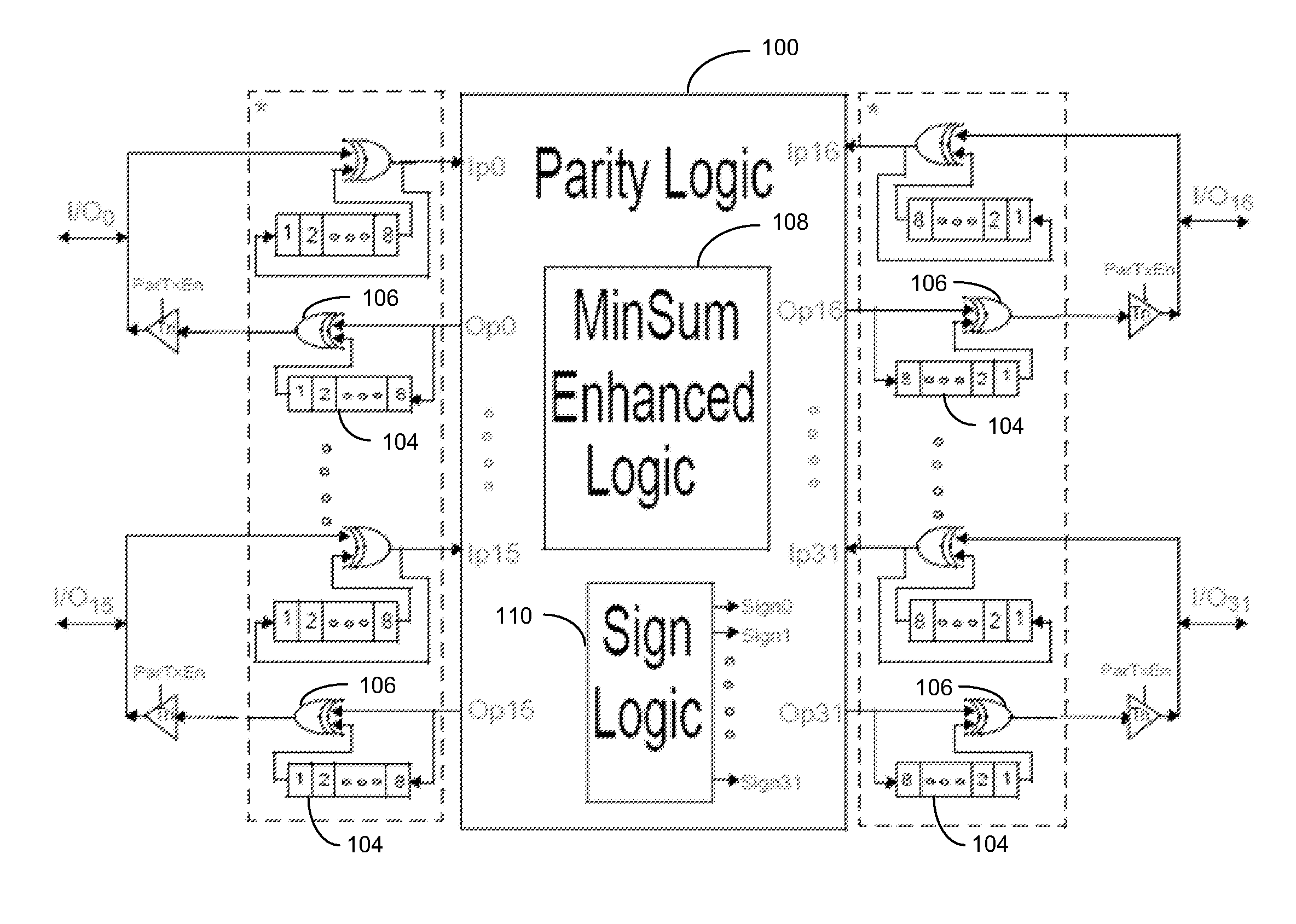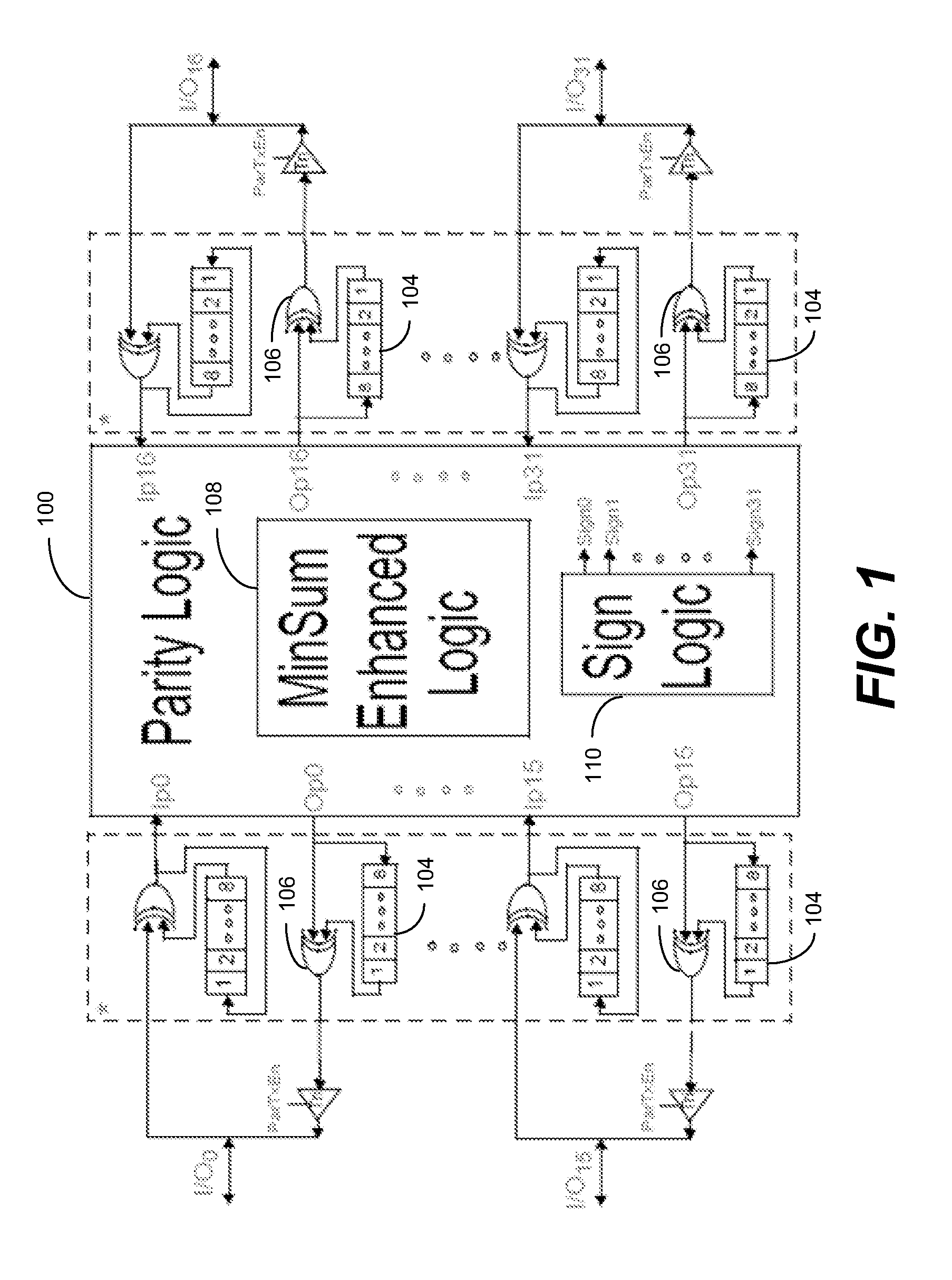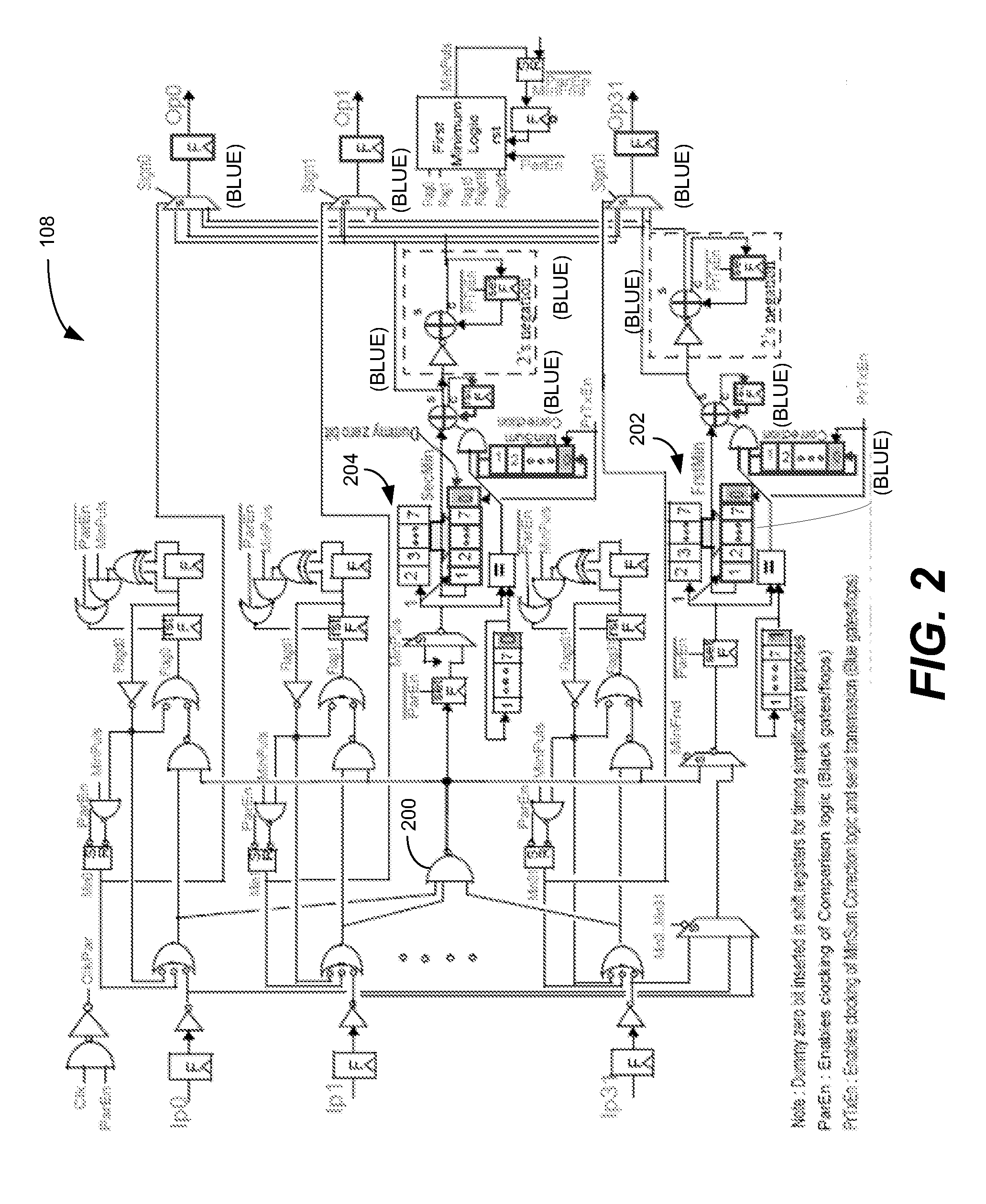Digital implementation of an enhanced minsum algorithm for error correction in data communications
a technology of error correction and minsum algorithm, applied in the field of data communication, can solve the problems of computational complexity, complex implementation of ldpc decoding, and more complex than the required encoding
- Summary
- Abstract
- Description
- Claims
- Application Information
AI Technical Summary
Benefits of technology
Problems solved by technology
Method used
Image
Examples
Embodiment Construction
[0019]An error correcting decoder is typically implemented, e.g., in a network system, to reduce communication errors. One type of an error correcting decoder is an iterative error correcting decoder. Iterative error correcting decoders typically use a large-scale parallel network of nodes performing soft probability calculation. These nodes exchange probability information of a received data block among one another. After a certain number of iterations within an iterative decoder structure, individual noisy information in a data block (or word) is transformed into an estimate of the word as a whole. Examples of iterative decoders are the low density parity check (LDPC) decoders, Hamming decoders, Reed-Solomon decoders, Turbo decoders, and the like.
[0020]The structure of an iterative error correcting decoder can be represented graphically by a factor graph. A factor graph consists of nodes and edges, where the edges represent wire connections between the nodes, and a node represents...
PUM
 Login to View More
Login to View More Abstract
Description
Claims
Application Information
 Login to View More
Login to View More - R&D
- Intellectual Property
- Life Sciences
- Materials
- Tech Scout
- Unparalleled Data Quality
- Higher Quality Content
- 60% Fewer Hallucinations
Browse by: Latest US Patents, China's latest patents, Technical Efficacy Thesaurus, Application Domain, Technology Topic, Popular Technical Reports.
© 2025 PatSnap. All rights reserved.Legal|Privacy policy|Modern Slavery Act Transparency Statement|Sitemap|About US| Contact US: help@patsnap.com



